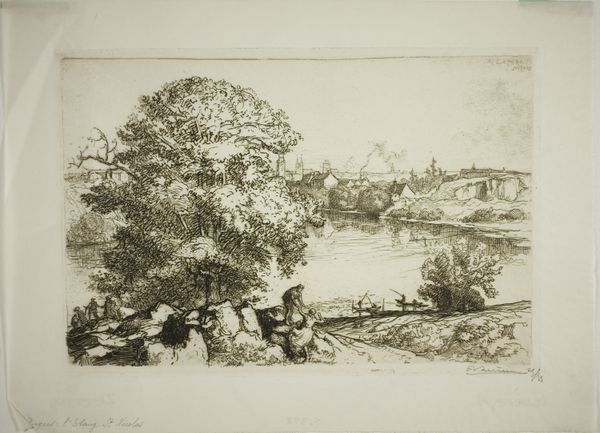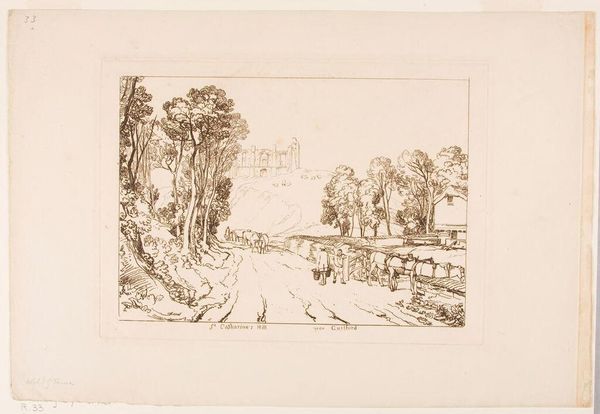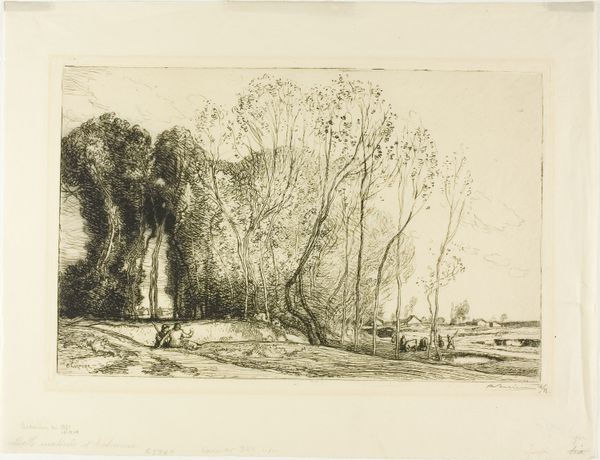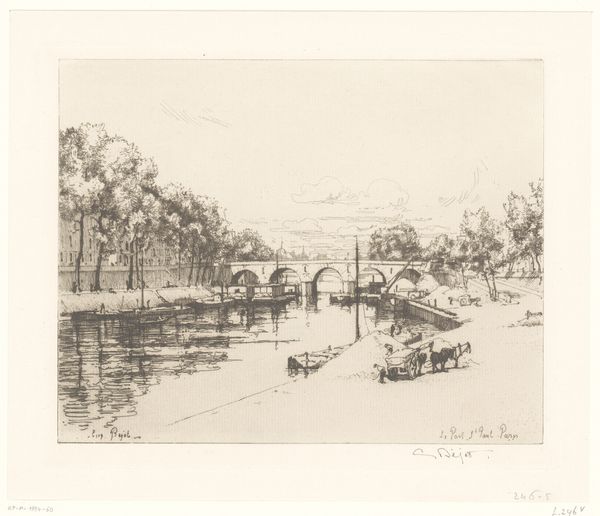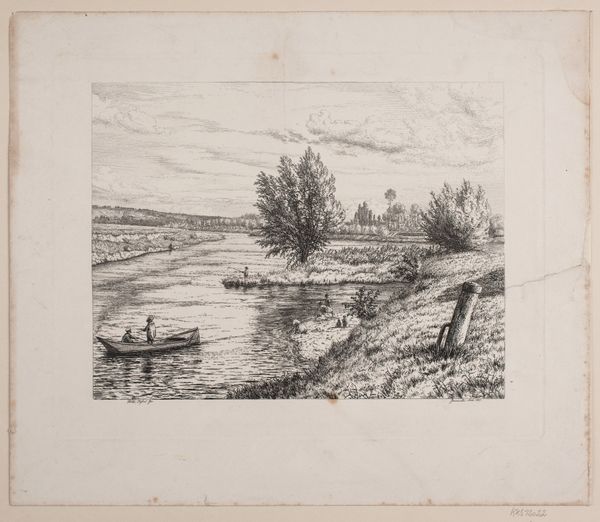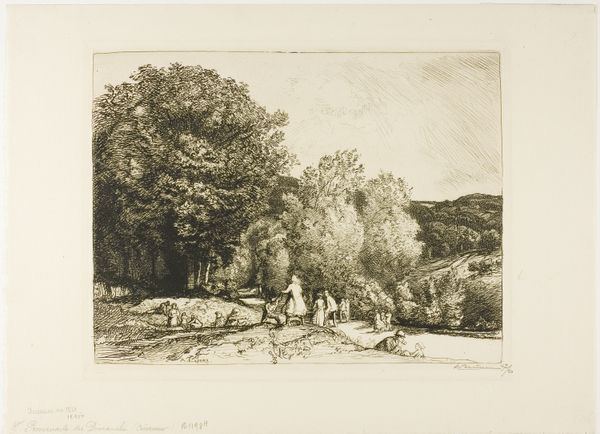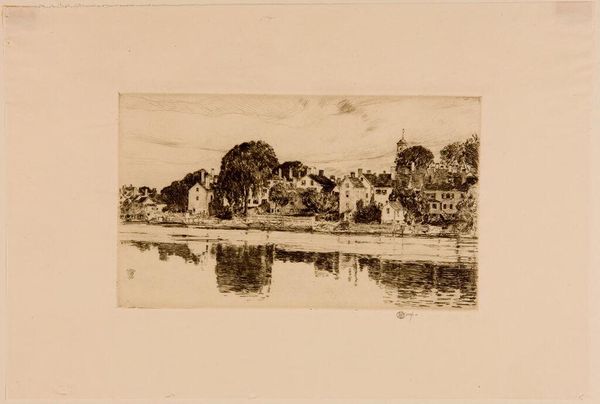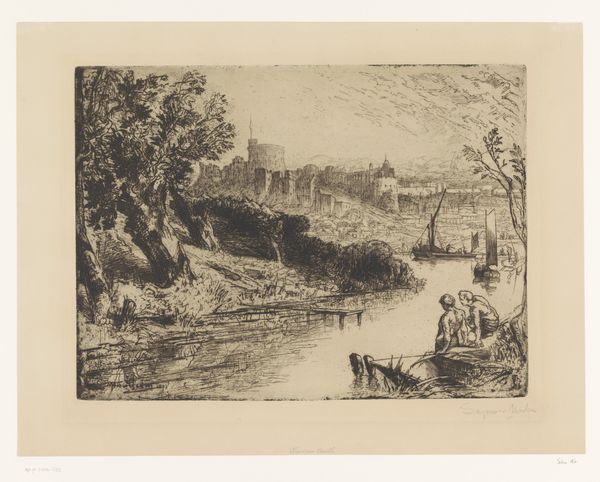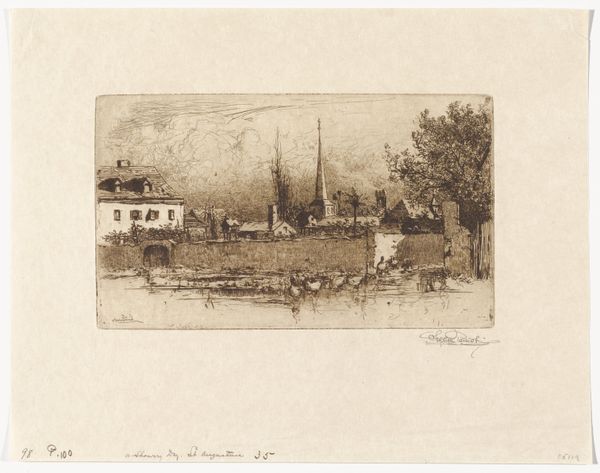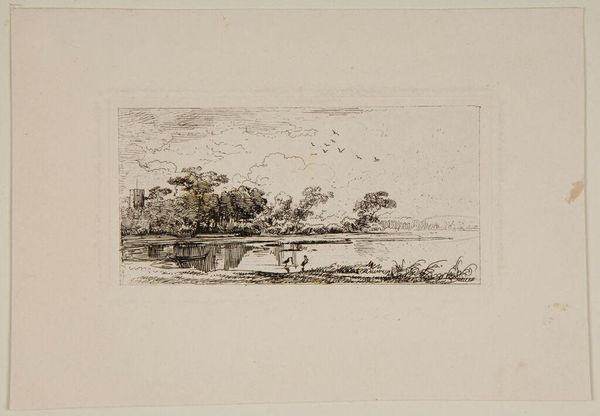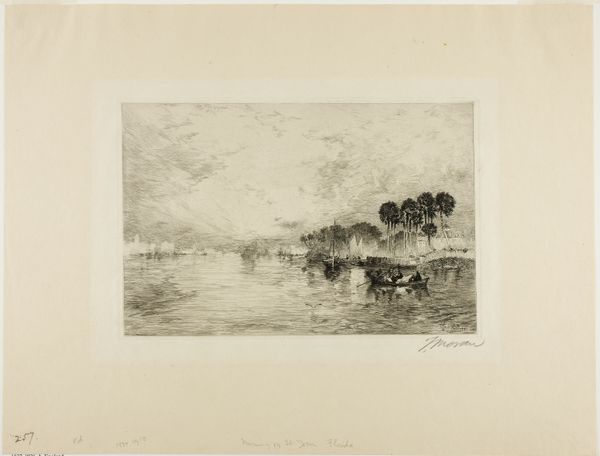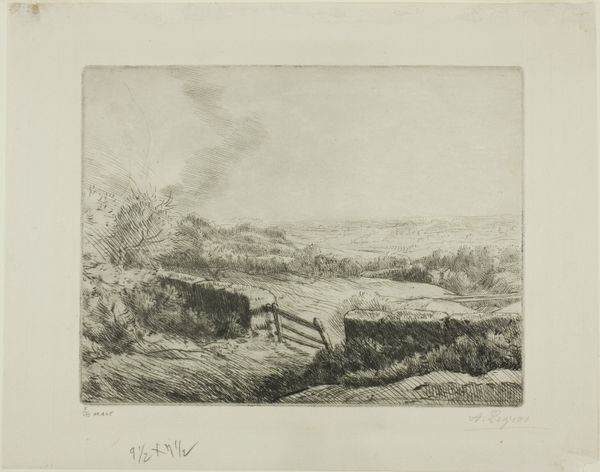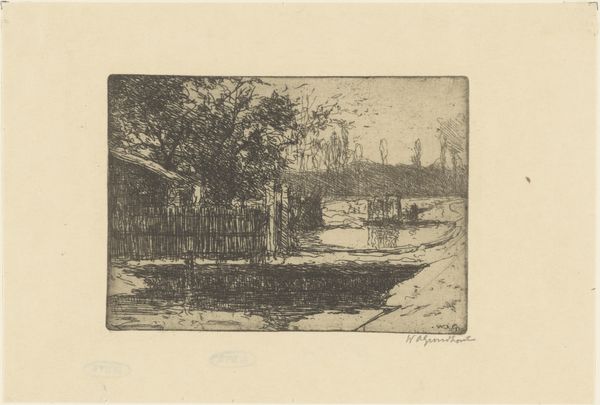
Dimensions: 161 × 212 mm (image); 169 × 218 mm (plate)
Copyright: Public Domain
Curator: This etching, titled "Poissy", was created by Auguste-Louis Lepère in 1908. I’m struck by how he captured such a complete scene using only the fine lines of the etching process. What catches your eye first? Editor: Well, immediately I'm drawn to the almost dreamlike, nostalgic feel it has. The details are soft, like a half-remembered memory of a summer day. Curator: That resonates with the broader artistic currents of the period. It’s French Impressionism rendered in print. Look at how Lepère plays with light and shadow, not in blocks of color, but through a dense network of lines, creating texture and atmosphere. Notice the figures on the shore – they almost blend into the trees. Editor: Exactly! It feels very human and lived-in. The composition subtly guides the viewer. We have these strong vertical lines of the trees leading us toward the bridge and the open expanse of the river beyond, representing civilization's integration with nature. Curator: The bridge itself could be a symbol of connection and progress, yet it's framed by the more organic, less structured trees. There’s almost a dialogue there, an awareness of industrial progress encroaching upon the natural world. And this work, being a print, means it's accessible, portable, replicable... It spreads this imagery, this ideal. Editor: Yes, and etching is also inherently about layers, about building up meaning. We see that here in the image's narrative complexity—not just a pretty landscape but a tableau of daily life unfolding with figures working, resting. It portrays modern social realities. How would the citizens of Poissy perceive this image? It captures a sort of ordinary serenity that would probably appeal across class lines. Curator: Perhaps, though prints often found their primary audiences among the bourgeois, who collected them and reinforced a certain cultural capital by doing so. The print becomes a token, not just of aesthetic appreciation, but of cultural awareness and refinement. Still, your point stands. Editor: Ultimately, its strength lies in Lepère’s masterful technique and his eye for the quiet rhythms of ordinary life along the river, which transcends social classes. Curator: Indeed, it speaks volumes about its time and its culture through its very texture and choice of subject, offering a gentle yet profound insight into France at the beginning of the 20th century.
Comments
No comments
Be the first to comment and join the conversation on the ultimate creative platform.
